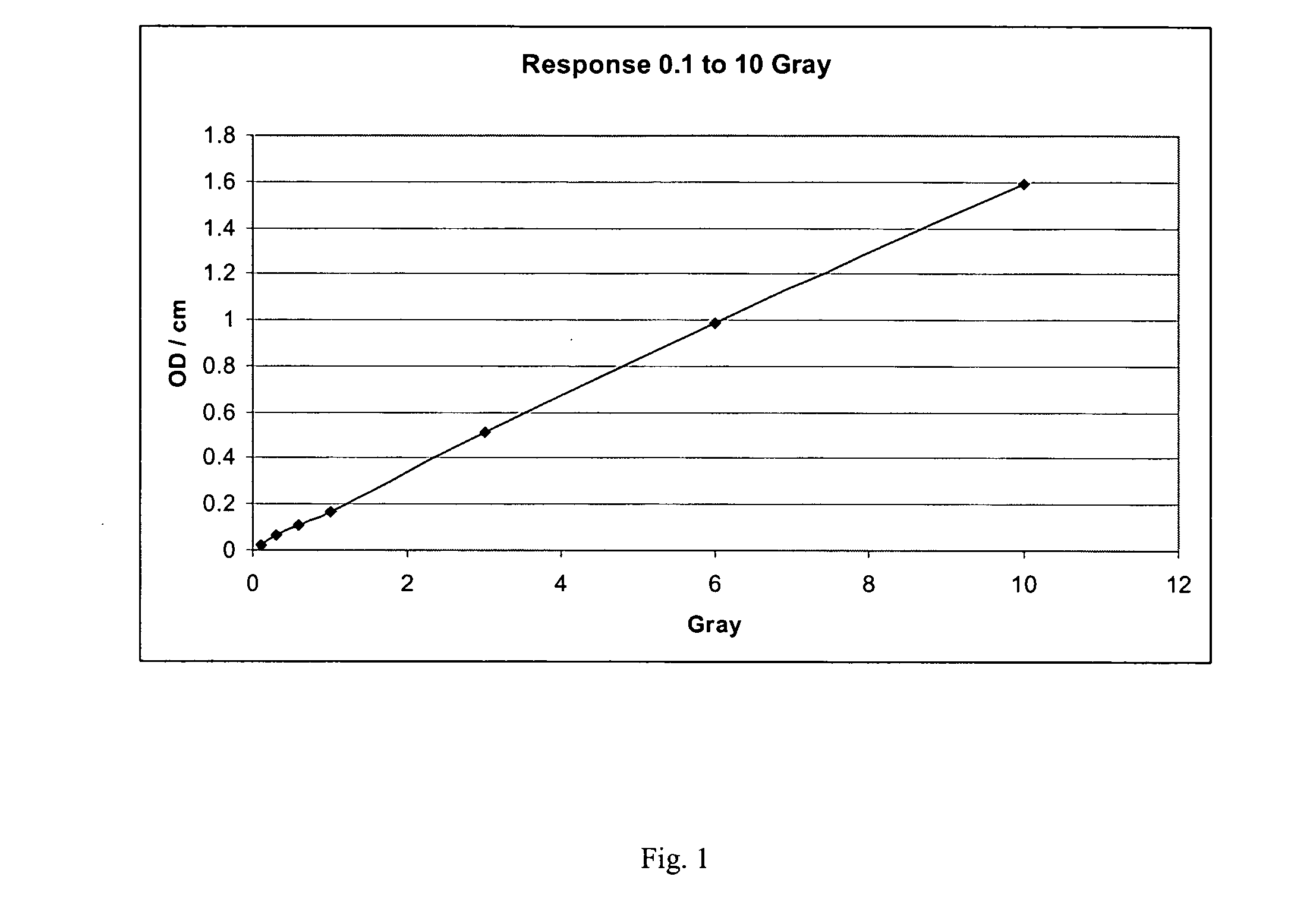Three-dimensional shaped solid dosimeter and method of use
- Summary
- Abstract
- Description
- Claims
- Application Information
AI Technical Summary
Benefits of technology
Problems solved by technology
Method used
Image
Examples
example 1
[0077] Crystal Clear 206 Part A (250 g), Crystal Clear 206 Part B (200 g), carbon tetrachloride (180 g), Optic Part 14X catalyst (0.6 ml) and leucomalachite green (16 g) were blended thoroughly in a 1000 ml polyethylene beaker until the mixture was homogeneous. The mixture was then immediately poured into molds. The molds were either glass or polyethylene 30 ml vials. The filled molds were then placed under 60 psi pressure and maintained at 25° C. for 18 hours. This was achieved by arranging the molds within a pressure pot of the appropriate size and pressurizing with a compressor pump. At the end of this period, the solid dosimeters formed in polyethylene vials were removed from the molds.
example 2
[0078] In order to assess the dose response of the conversion of the leuco dye of the present invention to the amount of radiation encountered, dosimeters as described in Example 1 were subjected to graded doses of 145 kVp x-rays at three different dose rates, 0.66 Gy / min, 2.17 Gy / min, and 4.4 Gy / min, using Torrex 150D X-ray unit (EG&G, Long Beach, Calif.). The irradiated dosimeters were evaluated using the commercially available OCT-OPUS™ CT scanner (MGS Research, Inc., Madison, Conn.). In this analysis the conversion of leucomalachite green to the colored species is detected as an increase in optical density at 633 nm, a wavelength at which the leuco dye does not absorb. The transformation of leucomalachite green to its colored form was linear with dose and independent of dose rate.
example 3
[0079] 4,4′-methylene bis(cyclohexyl isocyanate) (HMDI) (94 g), carbon tetrachloride (90 g), Crystal Clear 206 Part B (80 g), leucomalachite green (4.0 g) and Optic Part 14X catalyst (1.0 ml) were blended thoroughly in a 1000 ml polyethylene beaker. The mixture was then immediately poured into mold fabricated from a 500 ml cylindrical polyethylene beaker. The filled mold was pressurized as in Example 1 and incubated at 25° C. for 20 hours. The solid dosimeter was then removed from the mold.
PUM
 Login to View More
Login to View More Abstract
Description
Claims
Application Information
 Login to View More
Login to View More - R&D
- Intellectual Property
- Life Sciences
- Materials
- Tech Scout
- Unparalleled Data Quality
- Higher Quality Content
- 60% Fewer Hallucinations
Browse by: Latest US Patents, China's latest patents, Technical Efficacy Thesaurus, Application Domain, Technology Topic, Popular Technical Reports.
© 2025 PatSnap. All rights reserved.Legal|Privacy policy|Modern Slavery Act Transparency Statement|Sitemap|About US| Contact US: help@patsnap.com



